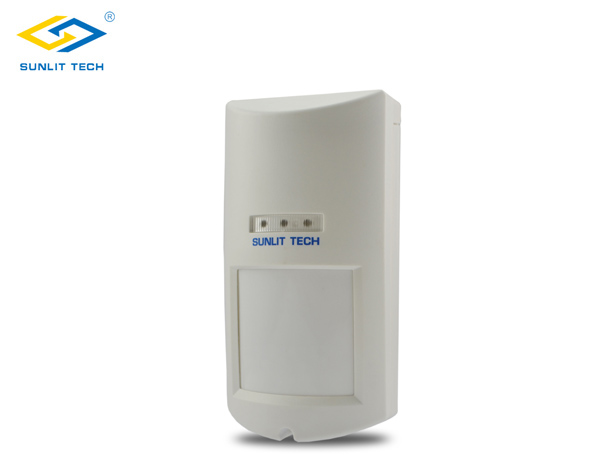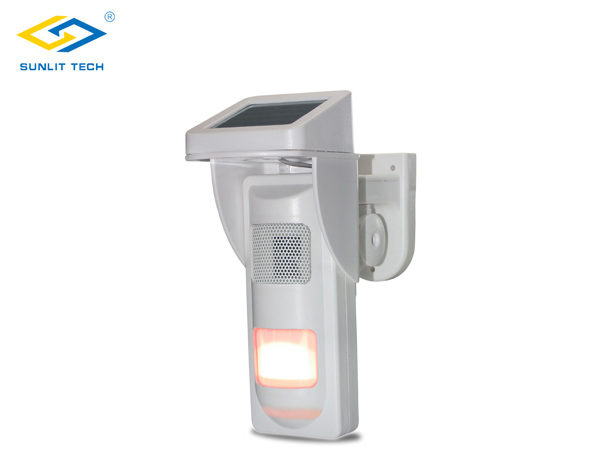How Does an Outdoor WiFi Motion Sensor Work?
Outdoor WiFi motion sensors have become a crucial component of modern security systems, providing enhanced protection and convenience for homeowners and businesses alike. These devices utilize advanced technology to detect movement and send alerts through a wireless network. In this article, we'll explore the working mechanism of outdoor WiFi motion sensors, with a focus on PIR detectors, PIR motion sensor detectors, and wireless outdoor motion detection.A PIR detector (Passive Infrared detector) is a type of sensor that detects infrared radiation (heat) emitted by living beings. When a warm object, such as a human or animal, enters the detection zone, the sensor picks up the change in infrared radiation levels. PIR detectors are favored for their reliability, energy efficiency, and low cost.
1. How Does a PIR Motion Sensor Detector Work?
A PIR motion sensor detector operates by sensing variations in infrared radiation in its environment. Here’s a step-by-step explanation of how it works:
Sensing Elements: The PIR sensor consists of two pyroelectric elements. These elements generate a small electrical signal when exposed to infrared radiation.
Detection Zone: The sensor is designed to cover a specific area. When an object with a different temperature than the ambient environment enters this zone, the infrared radiation levels change.
Signal Processing: The change in infrared radiation is detected by the pyroelectric elements, which generate corresponding electrical signals. These signals are processed by the sensor's internal circuitry to determine whether the detected change is significant enough to be considered motion.
Triggering an Alert: Once the sensor confirms motion, it sends a signal to trigger an alert. In the case of WiFi-enabled motion sensors, this signal is transmitted wirelessly to a connected device, such as a smartphone or a central monitoring system.

2. Wireless Outdoor Motion Detection
Wireless outdoor motion detection systems leverage WiFi technology to enhance the functionality and convenience of traditional motion sensors. Here’s how these systems typically work:
Wireless Communication: The motion sensor is equipped with a WiFi module that allows it to connect to the home or business’s wireless network.
Real-Time Alerts: When motion is detected, the sensor sends real-time alerts to designated devices via the WiFi network. This enables instant notifications through smartphone apps, emails, or text messages.
Integration with Smart Systems: Many wireless outdoor motion detection systems can integrate with other smart home or security devices, such as cameras, alarms, and lighting systems. This integration allows for automated responses, such as turning on lights or recording video footage when motion is detected.
Remote Monitoring: With wireless connectivity, users can monitor and control their motion sensors remotely. This is particularly useful for homeowners who are away and want to ensure their property is secure.

3. Advantages of Using WiFi Motion Sensors
Enhanced Security: Outdoor WiFi motion sensors provide an additional layer of security by detecting unauthorized movement around a property and sending immediate alerts.
Convenience: Wireless connectivity eliminates the need for complex wiring, making installation simpler and more flexible.
Energy Efficiency: PIR motion sensor detectors are highly energy-efficient, as they only activate when motion is detected, reducing unnecessary power consumption.
Scalability: Wireless systems can be easily expanded to cover larger areas or additional properties without the need for extensive infrastructure changes.

4. Applications of Outdoor WiFi Motion Sensors
Home Security: Protecting the perimeter of a home by detecting intruders before they reach the building.
Commercial Security: Monitoring parking lots, entrances, and other outdoor areas of commercial properties.
Smart Home Automation: Integrating with lighting and other smart devices to enhance convenience and energy efficiency.
Wildlife Monitoring: Tracking animal movements in gardens or farms to protect crops and livestock.
Outdoor WiFi motion sensors, particularly those using PIR detectors, offer a reliable and efficient solution for motion detection. By combining the sensitivity of PIR motion sensor detectors with the convenience of wireless outdoor motion detection, these devices provide robust security and seamless integration with modern smart home systems. Whether for home or commercial use, WiFi motion sensors are a valuable addition to any security setup, ensuring peace of mind and enhanced protection.
pir detector pir motion sensor detector wireless outdoor motion detection
 简体中文
简体中文
